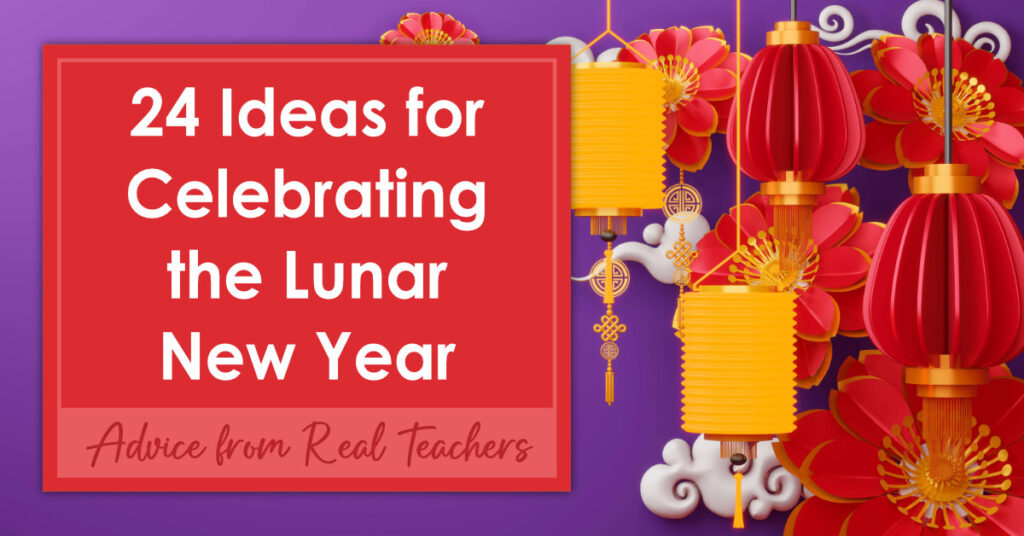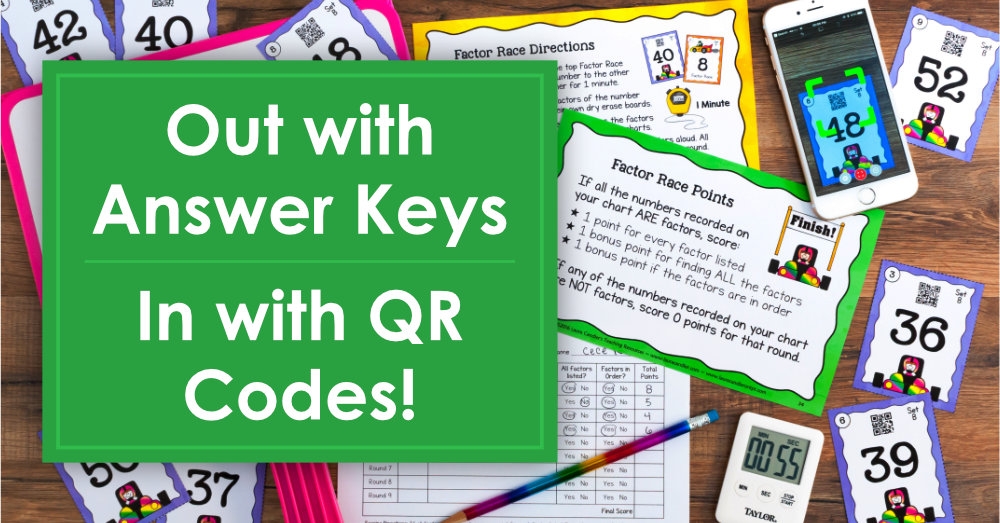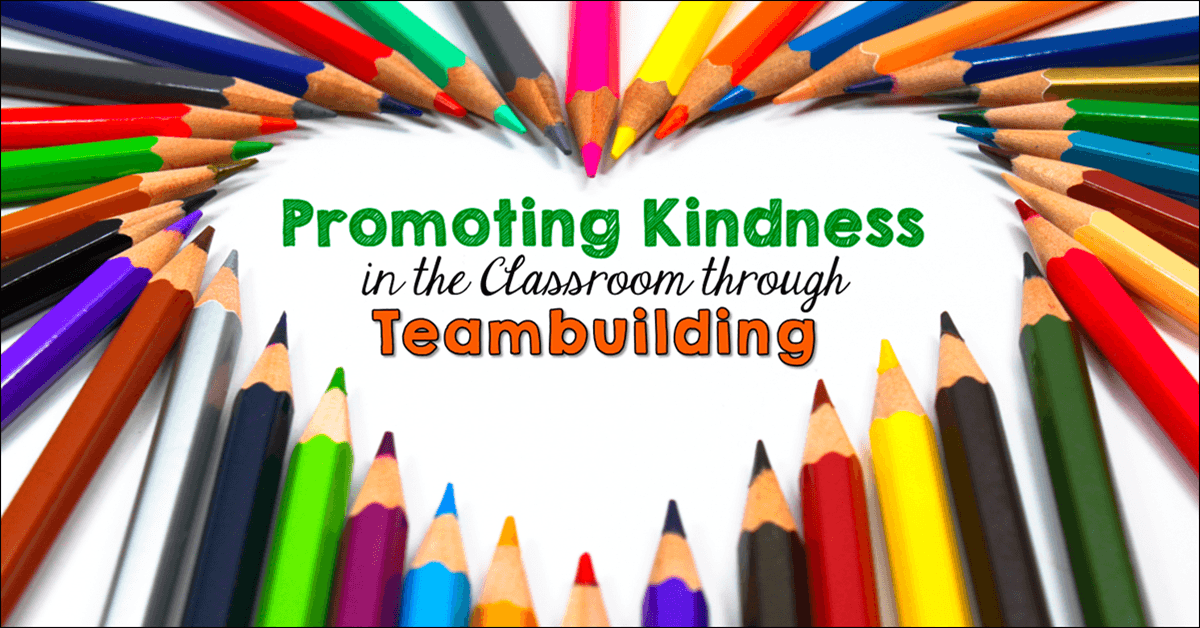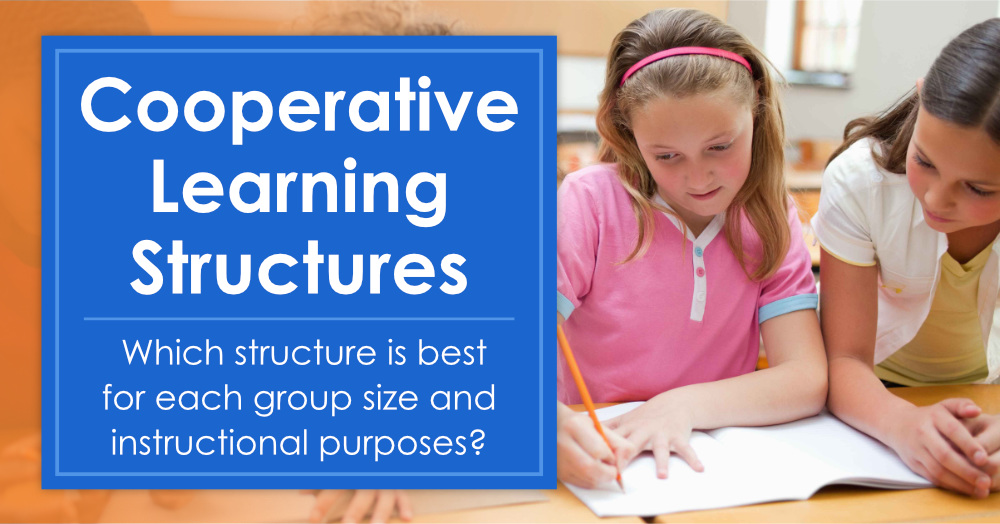Advice from Real Teachers Series
The Lunar New Year is one of the most important holidays in many East and Southeast Asian countries. The celebration marks the beginning of the lunar calendar, which is based on the cycles of the moon. The holiday usually falls between January 21 and February 20, depending on the lunar cycle. This year it begins on January 29th. China is the largest country that celebrates this holiday, so it’s often referred to as the Chinese New Year.
Today’s Question
Many years ago I asked followers of the Teaching Resources Facebook page to answer the question, “How do you celebrate the Chinese New Year? What resources can you recommend to others?” I should have used the phrase “Lunar New Year,” but at the time I wasn’t aware of this distinction and most educators referred to the holiday as the Chinese New Year. If I were to post the question again today, I would most certainly use the term “Lunar New Year” as it is more inclusive.
The ideas below were shared on Facebook, but until now, I have never shared them on my blog. I recently came across this list of ideas and decided to share it because it includes so many fun and educational ways to celebrate the Lunar New Year! In fact, I remember purchasing the book Sam and the Lucky Money many years ago as a result of reading the suggestions below! I loved the children’s story so much that I created a free lesson with discussion questions and a hands-on sorting activity to go with it. You can find my Lunar New Year Literacy Activities freebie on TpT, and you can read more about those activities here on my blog.
24 Ideas for Celebrating the Chinese New Year (Lunar New Year)
Below are the top 24 ideas that were shared by teachers on Facebook years ago. These responses use the term “Chinese New Year,” but most of the suggestions also work for celebrating the Lunar New Year.
- Laura Henry – One year, instead of celebrating JUST Chinese New Year, we had a Chinese New Year/Multicultural Day. We played games from different cultures and each student brought food from a different culture. It was great!
- Richelle Votaw – I have a video conference through the South Central Kansas Education Service Center scheduled, they’ve already sent along chopsticks and a pattern to make paper lanterns. My students will be learning about Chinese customs via video conference! 🙂
- Wendy Timmons – In my pre‐k class we are making egg rolls. Also, one of my co‐workers is from China and she is coming in to talk to the students and she’s making an apple filled pot sticker for the students to try. I got a preview of them last week and they are delicious!!
- Leanne Baur – Read Sam and the Lucky Money ‐ fabulous book for grades 2- 4. The moral of the story is great and it truly shows what Chinese New Year is all about. I did a list, group, label activity with Chinese New Year terminology as a warm‐up. We observed photos from the web of Chinese New Year and groups of students compared terms from the list‐group‐label activity to what… they were viewing on the web. Then, we discussed the Chinese Zodiac Calendar and read the characteristics of the animal that corresponded with their birth year. We read Sam and the Lucky Money and responded to a question such as: What would have done if you were Sam? We discussed the importance of his decision in the story and then made leisees with “lucky” symbols on them.
- Wendy Timmons – We read several stories as well. I borrowed Chinese character stamps from my co‐worker and the students enjoyed that. Our art teacher made dragons out of paper and craft sticks. I loved the moment when one student made the connection that red was a lucky color in China but in our class (we do the green, yellow, red stick) it’s not so lucky.
- Kristin Kuntz – When I taught China in 2nd grade, we had chopstick races as a fun way to end our unit. The students had to pick up dry noodles using their chopsticks and race to the other side of the room. For older students, you could have them research some cultural differences between their country and China. I had the privilege of traveling to China in 2009 with a group of students, and I had them do this in preparation.
- Monica Horn – We get together with our pen pals from a neighboring town and have fun using chopsticks picking up pretzels and candy, writing Haikus, solving tangram puzzles while reading Grandpa Tang Story, and learning about the different Chinese years. The best part is a lunch of Chinese food from a local Chinese restaurant.
- Tricia Cabel – As a class we create a Chinese box with traditional symbols on the sides. The final result looks like a tv Chinese take out box. Inside the box, we’ll place ceramic coins painted gold. We, then, read about the event and their celebrations. So much fun! It makes for a fun art and social studies project!
- Karen Keaton – I have my 1st and 2nd graders learn to use chopsticks and then eat a (small) bowl of marshmallows with them. The marshmallows are easy for little hands just learning to use chopsticks. We also make paper lanterns, look at a website to figure out what year we were born and attempt to copy some Chinese writing.
- Jennifer Clark – I contacted our local Kung Fu academy and they came and did a Lion Dance demonstration that was awesome! We also pass out fortune cookies.
- Sherie Malta ‐ Last year for Chinese New Year, I made the kids fortune cookies and put in my own personalized fortunes for them…things like, you will succeed at something you’ve been working hard on & you will meet a new friend. I made it a writing activity. They had to write a story as if their fortune had come true. They loved it. I put their stories on display with cute little paper fortune cookies that had their fortunes sticking out. (Note from Laura: Here’s a video that shows how to make paper fortune cookies. Here’s a recipe for making your own edible fortune cookies.)
- Sala Anne – We are eating in our clans (whole school is divided and the older kids help their younger clanmates)…noodles with chopsticks, always a hit…then we will be having Chinese dancers come in to perform…every year we do something different…last year it was tai chi and mask making, paper cutting, Chinese lettering…
- Shannon Hoff – Our kids are making dragons with paper towel rolls as the bodies, ribbon as the tails, and a printout as the head that they put together and decorate. We are then going to have a dragon parade down the hallway.
- Kathy Thomas – I traveled to China a couple of years ago and bought many souvenirs which I use to decorate the classroom. I even bought a 1/2 size terra cotta soldier which I have the students sit by to have their picture taken. I enjoy teaching about the parts of China I was able to visit. I show lots of pictures and video. I have been “teasing” the students since August with bits and pieces of my travels to peak their curiosity. They are as excited to learn about China as I am to teach them.
- Amanda Elmer – Red Envelopes traditionally have money inside. How about red envelopes in which a positive message or wish is written and then given?? Children could either write a small message for each peer or each person could draw a name randomly.
- Emily Alling Horton – We read Ruby’s Wish, then write characterization poems about Ruby. We make our own red envelopes and mount the poems coming out of them. The kids then decorate the area around the poems with traditional Chinese New Year symbols & activities.
- Cheryl Titus – We always do a dragon dance around the school, under a cloth and each year we paint a box to be the head! JK/SK Kids love it!
- Jewelia Oswald – At my old school the Pre-K students would form a dragon for a dragon parade. We had a parent who had a big dragon head they used. The part I thought was a neat idea was that they would lay down pieces of bubble wrap and march them down the hall so that it sounded kind of like fire crackers. The other classes would come to the hall and watch them parade by and cheer. Very fun!
- Michelle Howell ‐ Martin I always read Sam and the Lucky Money and my students write about how they could help a stranger in need. We also read Lion Dancer and then figure out what sign they are on the Chinese Zodiac as well as figuring out what the animal will be in “x” number of years (working on 12s multiplication). I have also made fortune cookies and cooked food with them.
- Tiff Britt – I think that this is a great time to show some videos from BrainPop(C) or Discovery Education Streaming(C) (use to be United Streaming) in order to get the background in an engaging way. Then I would work with the students on the year that they were born in and use this to help create a circle graph (we are studying data and graphs right now) For the younger kids they could read “Red is a Dragon” on Tumblebooks (C) website.
- Jennifer Belland – The book D is for Dancing Dragon: A China Alphabet by Carol Crane was a wonderful one to have my students make new illustrations for. I read the book to them, had them do the illustrations then showed them the illustrations in the book. I also like the book My First Chinese New Year by Karen Katz. Simple book but full of great information.
- Billie Jo Guerrero – We start our week with asking what they know about China, New Year, etc. We take an imaginary trip through China with passports, stamps, and specific destinations and make “scrapbooks”. I went to China years ago so have lots of photos, video, memorabilia, posters, and children’s books to share. The week of study is followed by a “feast” that the children each bring a dish to share. Grandpa Tang is a great book to share and we do Tangrams as I read the story.
- Tracy Foss – I’ll be using Grandpa Tang’s Story and Tangrams as extension activities for math. We’ll also use an article from Scholastic News. I’m coming up with a Chinese New Year writing activity because we are preparing for the Writing SOL test.
- Callie Krohn – I use Chinese New Year to make reference resources meaningful in the library. I have the students find information about CNY using the encyclopedia and online resources. They have to find info including personality attributes associated with their animal. They compare/contrast those attributes about themselves using a Venn diagram, then share using Hand Up, Stand up, Pair Up, It’s a hoot because many of them feel that they are described pretty accurately!
The Question Connection on Facebook
If you would like to submit a question for me to post on the Teaching Resources Facebook page, you’ll find the information about how to do that on the original Question Connection blog post. Even if you don’t have a question, please follow me on Facebook and offer your advice when you see the questions come through! Working together, we can accomplish more!
Disclaimer: This post includes Amazon affiliate links to the books mentioned in the activities. When you make purchases on Amazon after clicking on one of the links, I earn a small commission.







